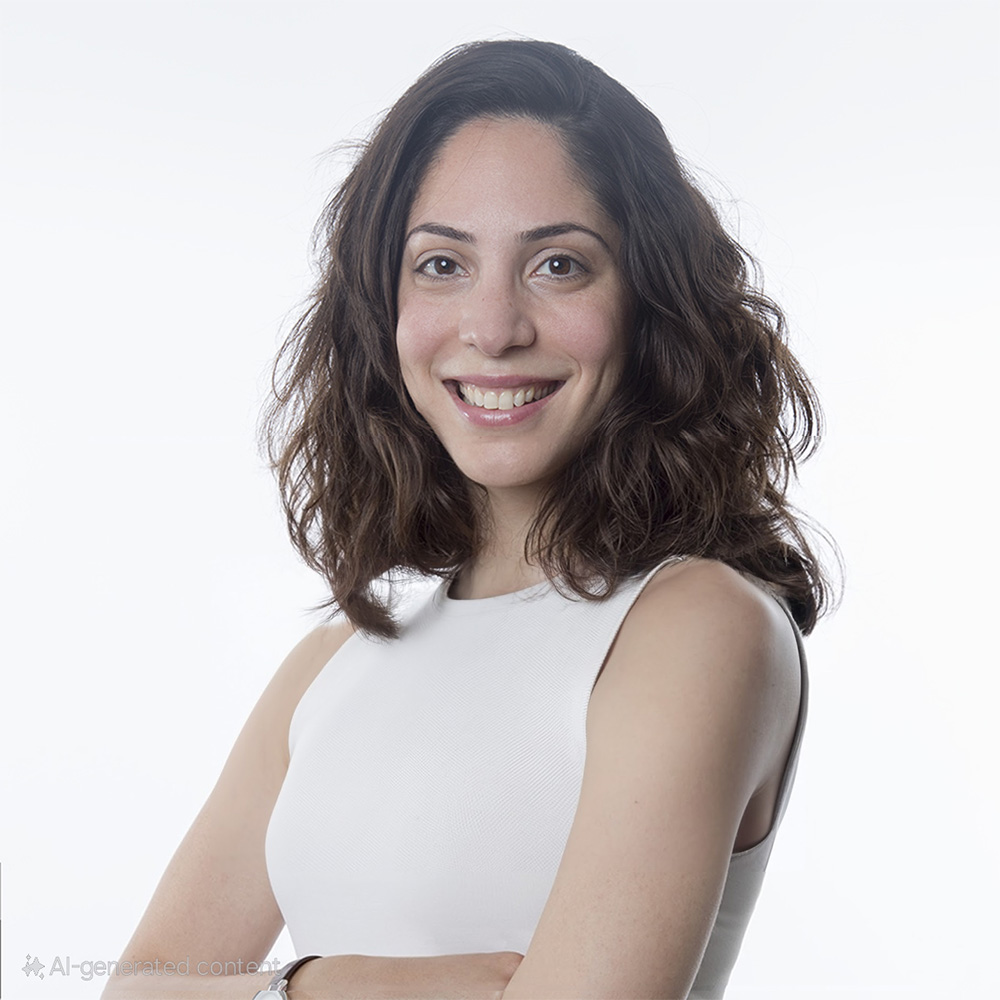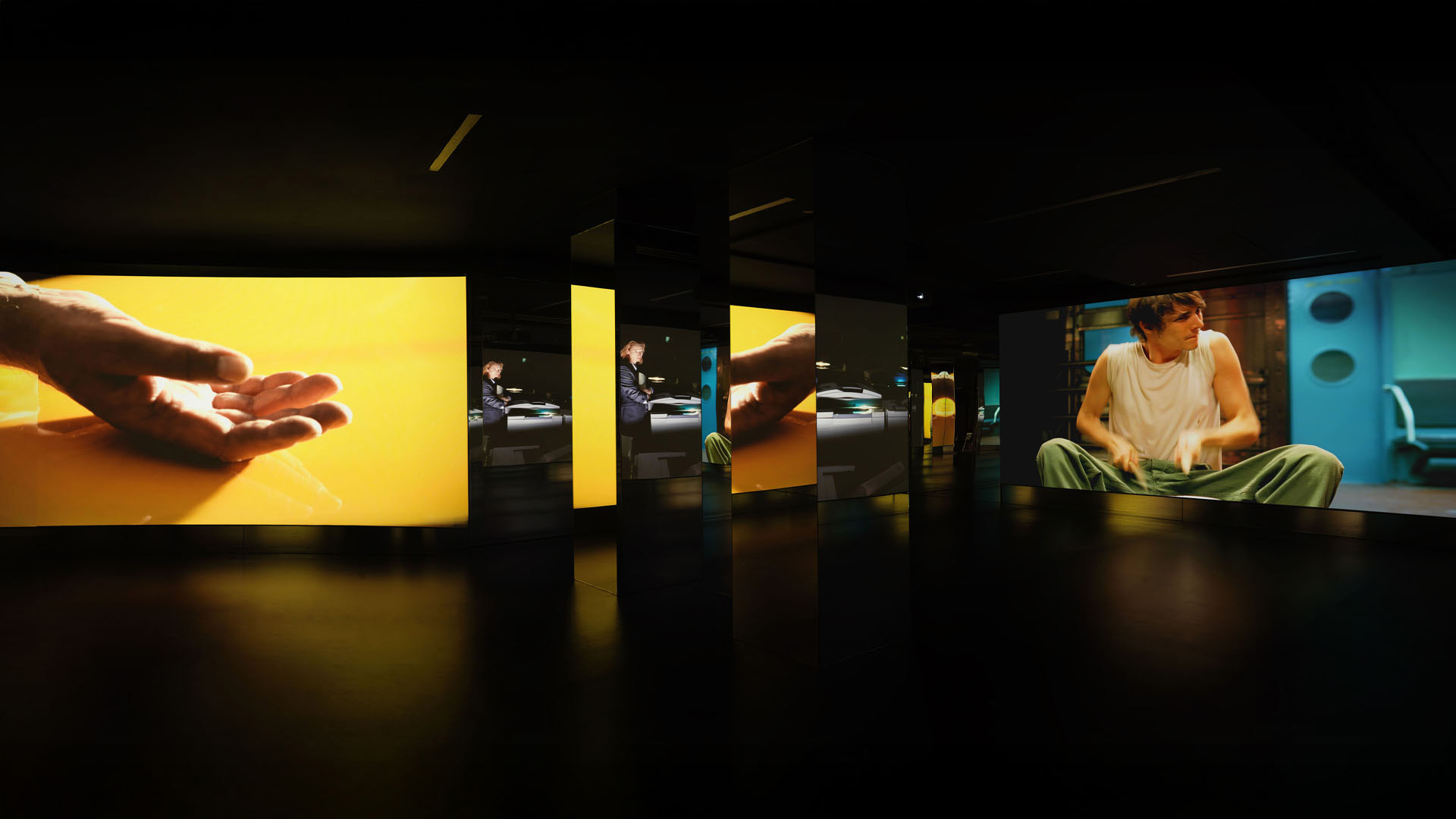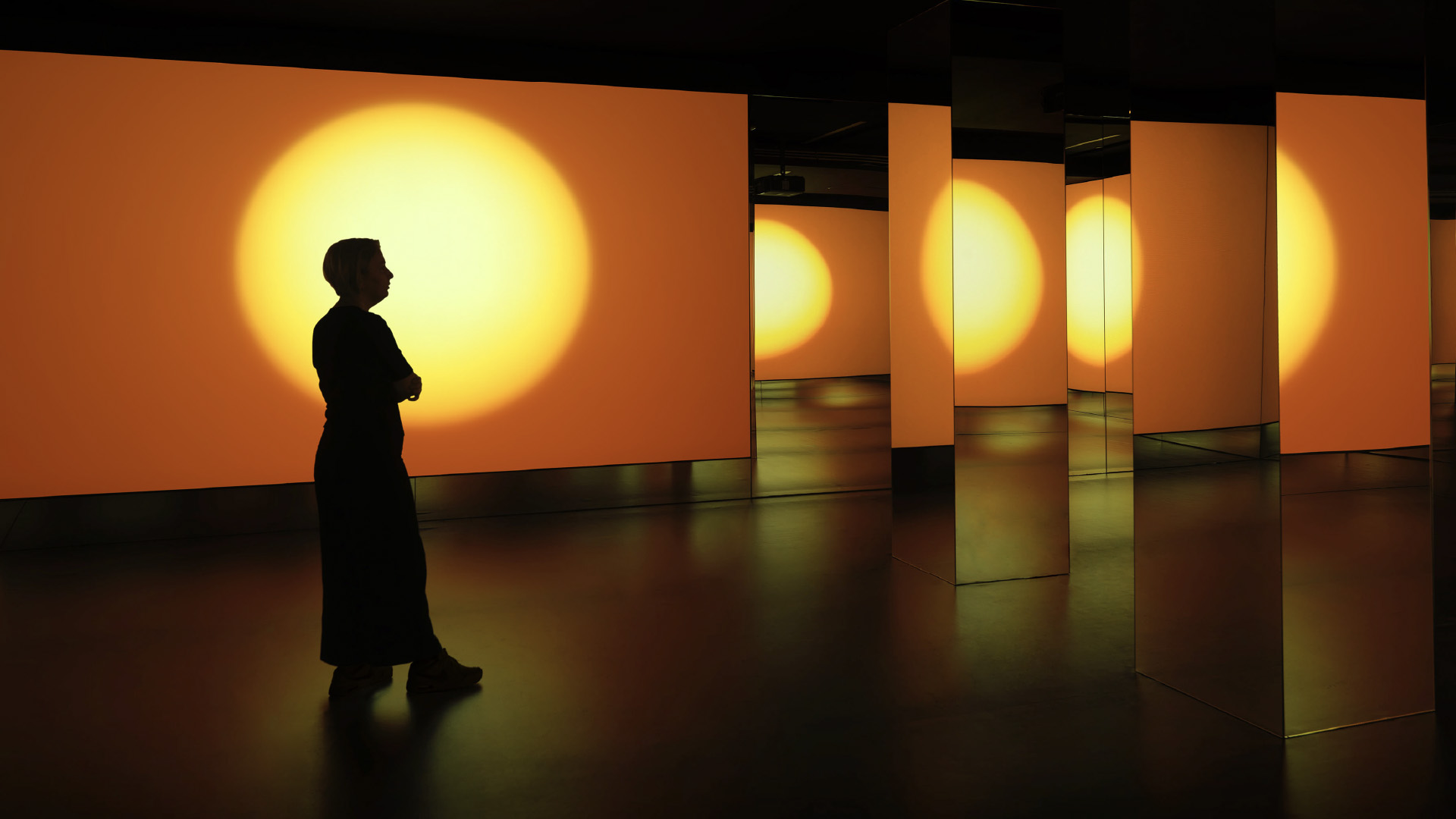Blog
Some notes on an expansive view of Sol LeWitt in three parts
30 June 2025 Mon
PART TWO:
The role of printmaking in Sol LeWitt’s oeuvre
In 1978, Sol LeWitt was given a major mid-career retrospective at the Museum of Modern Art (MoMA), New York, covering a relatively short yet productive period of production. The show, followed his first retrospective at the Hemeentemuseum in The Hague and several other museums shows in Europe, including the renowned When Attitudes Becomes Form (1969) show at the Kunsthalle Bern (where Sarkis took part with A Roll Waiting, 1968-69).
Significantly, the 1978 MoMA exhibition was somewhat of a homecoming for LeWitt, as the first major form of recognition for LeWitt as a transformative figure in American art. At the same time, this show become definitive of his career, showcasing two of his renowned areas of work, his instruction-based wall drawings and systems-based structures which were most prominently displayed in the exhibition, despite LeWitt being prolific in a wide range of media including drawing, printmaking, photography, painting, and artist's books. While his drawings and some artists books were featured in the 1978 retrospective, no prints were included in the main show, but at a remote location, under a smaller ancillary exhibition at the Brooklyn Museum.
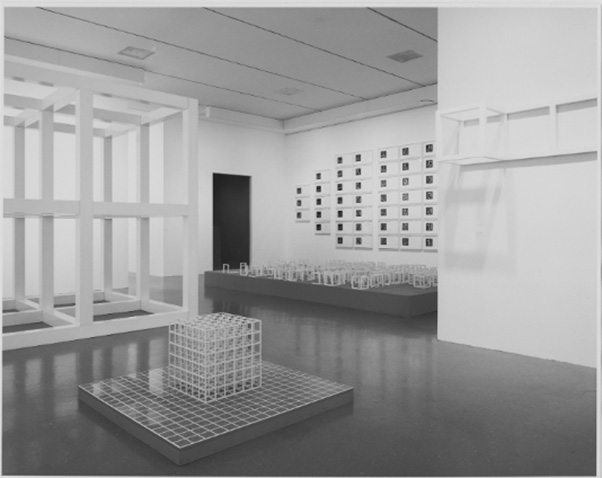
Installation view of Sol LeWitt Retrospective at MoMA. February 3 - April 4, 1978. Photographic Archive. The Museum of Modern Art Archives, New York. Photograph: Kate Keller.
It is curious to note that due to (or perhaps despite) such blockbuster shows, many people did not even know that Sol LeWitt made prints until recently, with the work of David Areford, among others who have been advocating for a more expanded view on the artist. Providing an in-depth reading of the entire scope of printworks by the artist, Areford points out that while printmaking in LeWitt’s oeuvre has been largely marginalised, the medium plays an important role in his works up to and after the 1960s. 1 In fact, looking at the use of printmaking and other media, such as gouache painting in LeWitt’s oeuvre provides significant insight into the artist’s experimentation with systems based conceptual art, as well as forming a bridge across his early and later career.
LeWitt having trained at the Syracuse University, had exhibited and even won awards for his figurative lithographic prints in the late 1940s and early 1950s. 2 LeWitt’s emphasis on thought over looking, have been observed to be a clear reference to Duchamp’s strides in defining his move from painting to ready-mades as ‘anti-retinal’ art has also supported the interpretation of his work through understanding systems alone, without much attention given to the material and mechanical aspects. The emphasis on the idea, and the distanced execution of the works, especially in the wall drawings and structures became definitive of LeWitt’s artistic practice, works that were not to be looked at, but pondered over, like a puzzle.
Despite being known to have rejected painting in favour of ‘idea-based art’, LeWitt returned to the materiality of colour and painting in printmaking in the 1970s, culminating his systems-based methodology with the inherent technical and mechanical properties of the medium. In fact, printmaking provided the perfect base for systematic serial practice, stretching its foundational features like the use of plates, reduction and layering as part of his vocabulary. Here, the edges of the paper like his site-specific works, as well as the combination of colours and shapes as in his structural permutations are presented, “creating perceptually and intellectually rewarding experiences ones that fully depend on their awareness of the subtle complexities of how prints are made.” Print specific strategies, specifically reversal and rotation as observed by Areford, as well as colour layering are central to LeWitt’s works on paper, where the system of bands of colour and rotations and repetitions are often outlined in the title of the work.
For example, the Lincoln Centre Print (1999) in the Borusan Contemporary Art Collection is a variation of the series of arc, circles, and irregular bands from the earlier Wall Drawing #917. 3 The series of bands and colours began with a pen and ink drawing reproduced on the cover of Artforum magazine in 1981. The cover image and centre folds are representative of the artists first woodcut prints of regularised bands and isometric studies of geometrical forms. 4
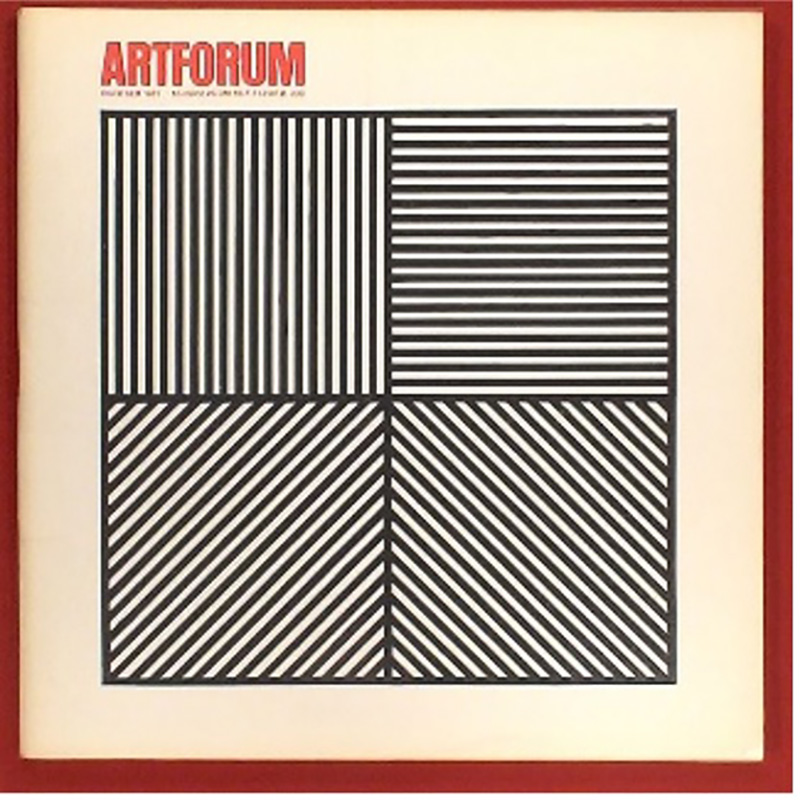
Cover of the 1981 October issue of Artforum magazine.
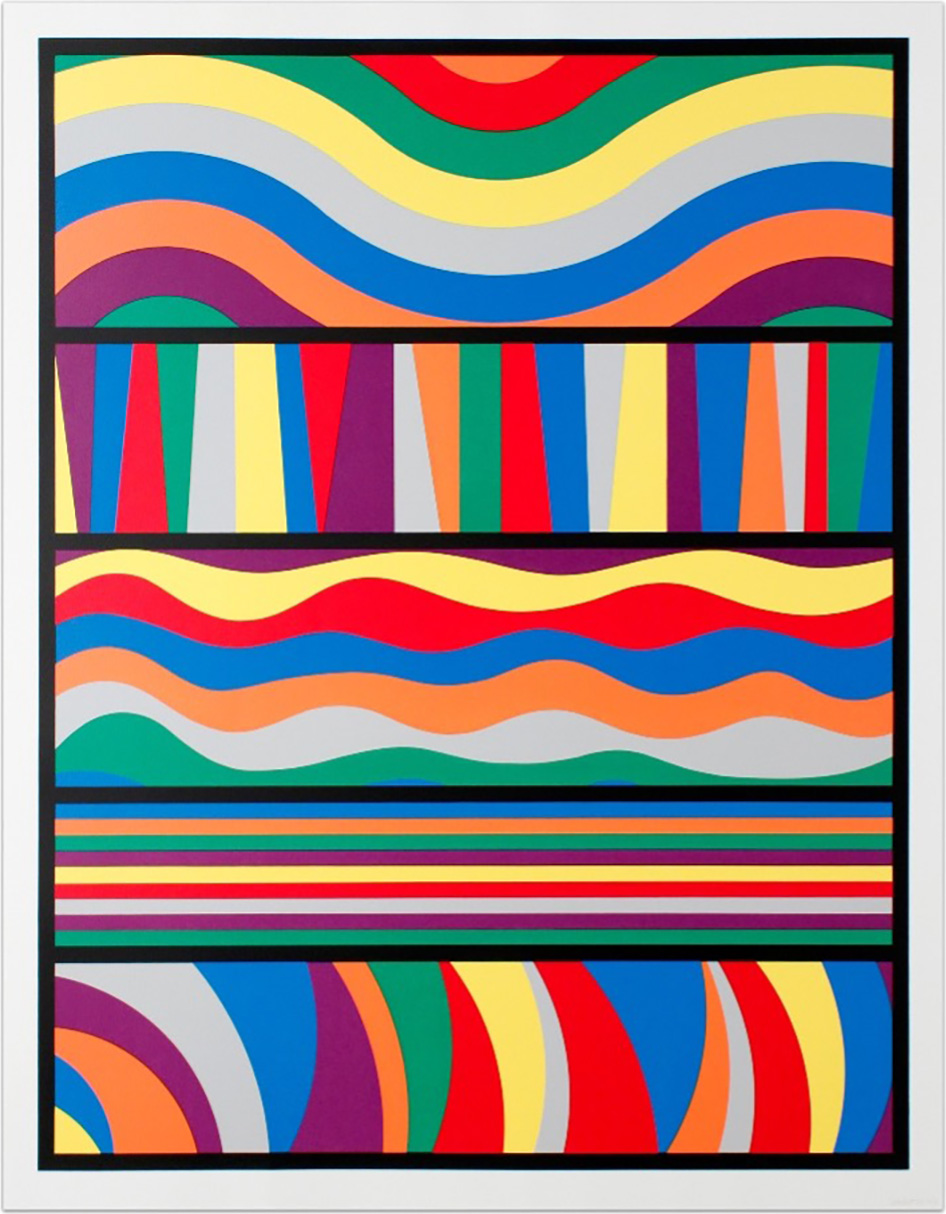
Sol LeWitt, Lincoln Center Print, 1999.
113 x 93 x 4 cm. Screenprint.
Borusan Contemporary Art Collection.
At the same time LeWitt returned to printmaking, in 1970 the artist began producing works with ‘scribble lines’ as seen in Wall Drawing #46 dedicated to artist Eva Hesse. The scribble lines were a clear departure from his signature straight lines, morphing into different variations of not straight lines in four colours and in various combinations with straight lines, broken lines, and arcs. Employing the process of rotational printing and repetition together with the layering of colour, LeWitt explores ways of expanding the visual capabilities of the viewer as in Irregular Arcs, Band and Loops (2000).
The use of colour in these artworks coincide with the shifting moment in twentieth-century art when a group of artists, including Ellsworth Kelly, Andy Warhol, Gerhard Richter, Frank Stella, and John Baldessari began to perceive colour as ‘ready-made’. Taking the commercial colour chart as its point of departure, these artists applied colour as an extension of their use of geometric shapes and industrial materials, therefore the colour becomes a basic device rather than as scientific or expressive conduits of originality, uniqueness, and authenticity.
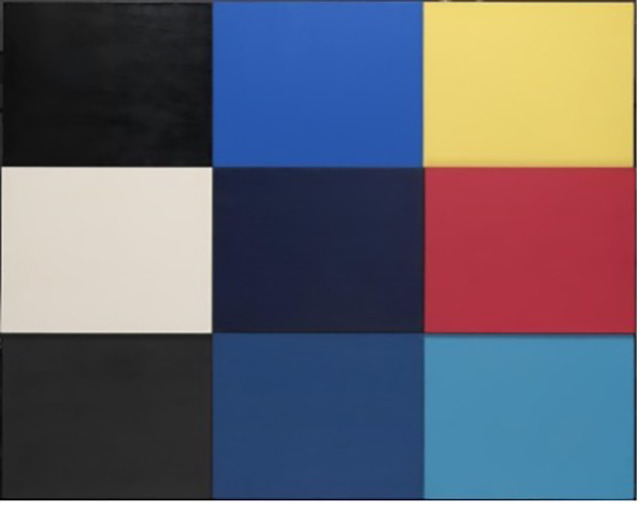
Ellsworth Kelly, Mediterranée, 1952.
Oil paint on wood.
© Ellsworth Kelly. Photo: Tate.
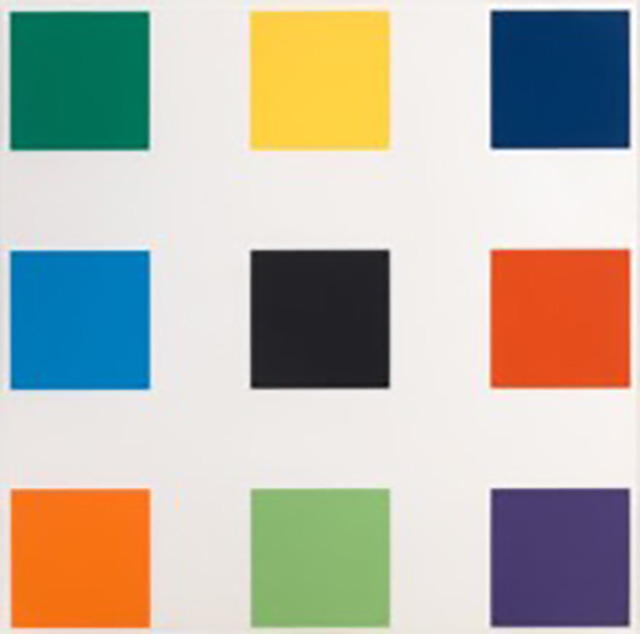
Ellsworth Kelly, Nine Squares, 1976-77.
Screenprint and lithograph on paper.
© Ellsworth Kelly. Photo: Tate.
Mediterranée is an early example of Kelly’s first purely abstract relief where he experimented with processes of chance to determine the colour combinations: in an attempt to demonstrate that “any colour goes with any other colour’ and ‘to learn about colour relationships.” 5 His use of relief reflected his desire to avoid the illusory representation of depth: “When I want to do a painting with one colour overlapping another, it has to be a real overlap, not a depicted overlap ... I no longer wanted to depict space, but to make a work that existed in literal space.” 6
While the paper with its material qualities and edges become an intimate arena for LeWitt, there is a clear link across different modes of production, works on paper such as drawings, prints and artists books, wall drawings as well as his minimal structures. LeWitt continued to explore colour and repetition in printmaking, as well as other media such as the 1979 dance video produced in collaboration with Lucinda Childs and Philip Glass. Here, inspired by the photography of Edward Muybridge and the simultaneously perception of an image from multiple viewpoints delivered by Cubism, LeWitt utilises the concept of isometric forms that can also be seen in a series of wall drawings, prints and artists books.
As in his instruction-based work, the medium of print making is used as a fabricator, as he said in a 1974 interview, “I do the minimum amount of work and I give it to the printer to complete.” 7 In 1973, he began the project Variations of Incomplete Open Cubes in which he systematically subtracted parts from an open cube, representing each possible variation. His interest in the cube extended beyond three-dimensional works: he created two-dimensional drawings of each of the incomplete open-cube variations. The cube would be a motif the LeWitt would return to time and time again, becoming a central concern in his later isometric method of perspective seen in the series of prints titled Isometric Figures in Five and Six Colours (2000-2002), which will be discussed in the next and final part of this series.
1- “Sol LeWitt: Irrational Thoughts”, David Areford in conversation with James Barron. November 8, 2023. Available at: https://www.youtube.com/watch?v=eea7KgzGwt8&ab_channel=JamesBarronArt .
2- David Areford, “Reversals and Rotations Sol LeWitt’s Print Strategies”, Key Note Lecture for exhibition "Strict Beauty: Sol LeWitt Prints". Williams College Museums of Mart. March 3, 2022. Available at: https://www.willinet.org/show/wcma-reversals-and-rotations-sol-lewitts-print-strategies/
3- See Plümer Bardak’s first essay on our blog for the image of the artwork.
4- David Areford, “Sol LeWitt: Thinking Through Prints”. September 23, 2022. New Britain Museum of American Art. Available at: https://www.youtube.com/watch?v=7ZafqybdEUM&t=3438s&ab_channel=NewBritainMuseumofAmericanArt
5- “Sixty years at full intensity: Colour Chart 1.” Elsworth Kelly in conversation with Christoph Grunenberg. Tate Etc. Issue 16 (Summer) May 1, 2009. Available at: https://www.tate.org.uk/tate-etc/issue-16-summer-2009/sixty-years-full-intensity .
6- Ibid
